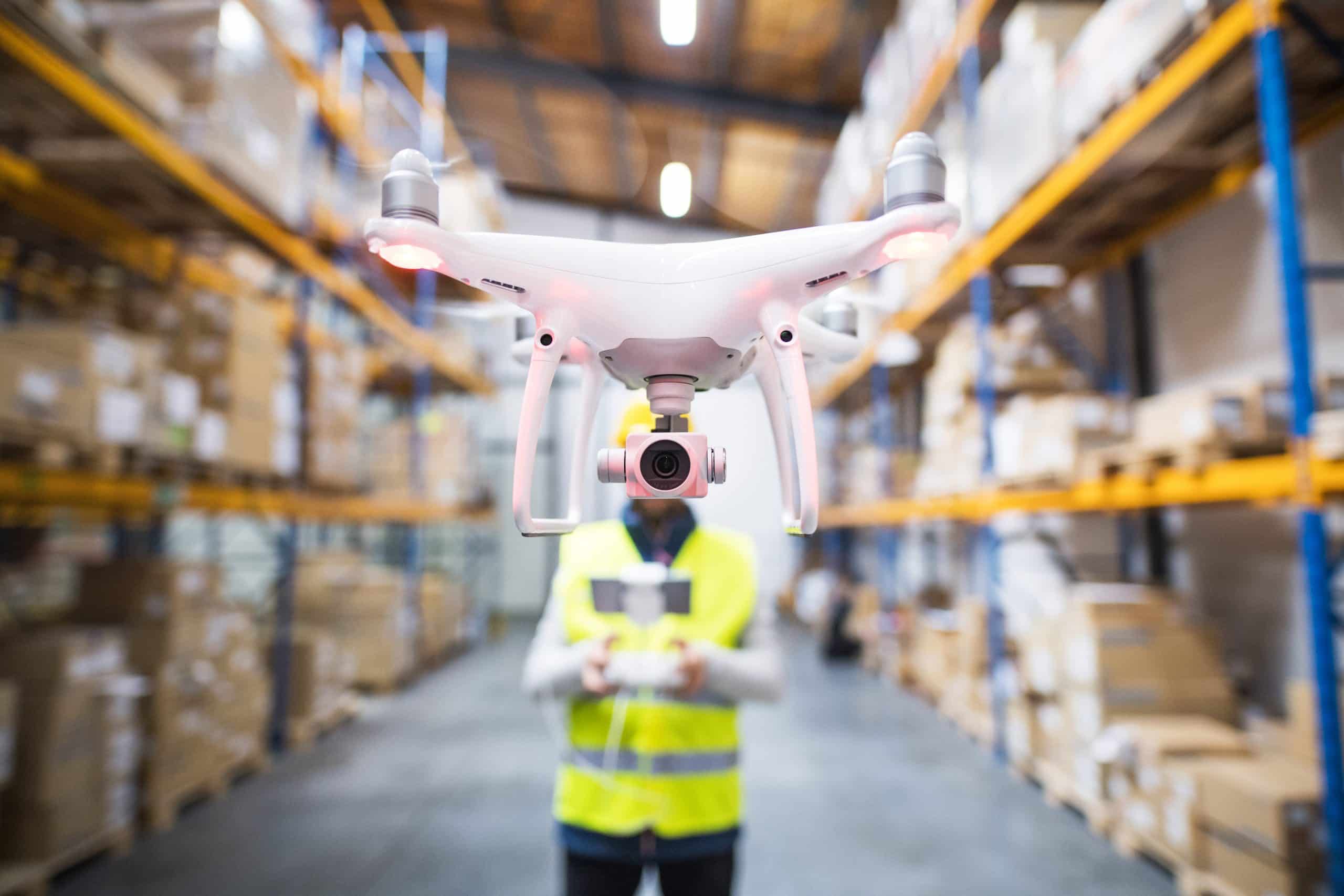What’s the Impact of Autonomous Drones on Tactical Analysis in Soccer?

As we dive into the world of football, an interesting revolution is shaping the future of the sport. An emerging technology is changing the way athletes, coaches, and scholars are looking at the game. Yes indeed, we are talking about autonomous drones and their impact on tactical analysis in soccer. Fascinated with the technological revolution, the world of sports is eagerly embracing this new trend. Soccer, being a global sport, is at the forefront of this evolution. So, let’s delve deeper and explore how these drones are impacting tactical analysis in the beautiful game.
Sports Technology: Autonomous Drones and Data Collection
When we talk about the use of technology in sports, most of you might think about video assistant referees or goal-line technology. But the realm of sports technology extends far beyond these applications. One such fascinating technology that is gaining momentum is the use of autonomous drones for data collection in sports.
A lire en complément : How to Use Blood Flow Restriction Training for Rehabilitation in Knee Injuries?
Autonomous drones are unmanned aerial vehicles (UAVs) that operate without a human pilot, making use of a global positioning system (GPS) to navigate. These drones are outfitted with high-resolution cameras and advanced sensors that can record and transmit real-time data. This information can then be used for player and team analysis, thus enhancing overall performance and training methods.
In soccer, these drones are becoming increasingly popular for collecting a trove of valuable data. They capture every minute detail of a soccer match or training session from unique vantage points, offering a bird’s-eye view of the game. This has brought a significant change in the way tactical analysis is done in the sport.
Cela peut vous intéresser : How Can Biohacking Techniques Enhance Athletic Performance?
Impact on Player Performance and Training
The use of autonomous drones in soccer is revolutionizing player performance analysis and training. The data captured by these drones provide a detailed insight into each player’s movements, positioning, and interactions on the field.
For instance, an autonomous drone can track a player’s speed, acceleration, and distance covered during a game. It can also record the number of successful passes, tackles, and shots on goal. This wealth of data is then subjected to detailed analysis, offering valuable insights into a player’s performance.
Moreover, the same technology can be utilized for creating personalized training regimens. By analyzing the data, coaches can identify the strengths and weaknesses of their players and tailor their training accordingly. This targeted approach can significantly boost the performance of athletes, leading to improved results on the field.
Enabling Tactical Analysis
The tactical analysis of a soccer match is a complex task. It involves understanding the strategy of both teams, analyzing their formations, observing player movements, and much more. In the past, this analysis was done manually, which was time-consuming and prone to errors. However, with the advent of autonomous drones, this process has become much more efficient and accurate.
Autonomous drones allow coaches and analysts to view the match from different angles, providing a comprehensive understanding of the game. They can identify patterns, formations, and strategies that might not be visible from the ground level. This information is crucial for developing game plans and strategies.
Furthermore, the data gathered by these drones can also be used for post-match analysis. By reviewing the footage, the coaching staff can understand what worked, what didn’t, and how they can improve in future matches.
Autonomous Drones and Sports: The Future
The future of sports technology looks promising with autonomous drones leading the way. These systems are expected to become even more advanced and efficient in the coming years, which will further enhance their application in sports.
For soccer, these advancements will translate into more detailed analysis and improved training regimens. We will also see an increase in the use of drones for scouting purposes. Scouts can use drone footage to observe players in different leagues and tournaments, helping them identify potential talent.
Moreover, these drones might also be used to improve the viewer experience. They can provide unique viewing angles during live broadcasts, making the game more engaging for the audience.
A Support System for the Scholar and the Athlete
The growth of technology in football does not only impact the game on the field, but also offers valuable resources for the scholar and the athlete off the field. As autonomous drones gather more data and offer nuanced views of the play, they have the potential to become an essential support system.
Sports scholars can use the data collected by drones for their research and studies. They can delve into aspects like player performance, team dynamics, and game strategies from a new perspective. This can lead to a deeper understanding of the game and contribute to the development of new theories and methodologies in sports science.
For athletes, these drones can be a tool for self-improvement. By reviewing the footage and data collected by drones, they can assess their own performance, identify areas for improvement, and work on their skills.
In conclusion, the impact of autonomous drones on tactical analysis in football is profound. They are revolutionizing the way the game is analyzed, played, and viewed. As technology continues to evolve, we can expect even more significant changes in the future. From player performance and training to tactical analysis and scouting, autonomous drones are set to redefine the landscape of soccer.
Autonomous Drones and Machine Learning: The Intersection of Science and Technology
The intersection of science and technology in the realm of soccer analysis is represented by machine learning and artificial intelligence. Machine learning algorithms help in processing and interpreting the enormous amount of data collected by autonomous drones. These systems can identify patterns, measure heart rate, and predict tactical behaviors of football players, making them a game-changer in sports performance analysis.
These technologies are evolving to become more efficient and intelligent. For instance, these systems can now predict player’s movements and team formations in real time, providing coaches with actionable insights during the game. This high level of analysis was unfathomable a few years ago and it’s changing the way we perceive and understand the game.
Moreover, the integration of artificial intelligence enables these systems to learn and improve with each training session or match. As more data is gathered and analyzed, the system becomes better at identifying patterns and predicting outcomes. This means that the quality of tactical analysis is continuously improving, leading to more precise decisions on the field.
Utilizing these advanced technologies, an autonomous drone can help in identifying potential talent in different leagues and tournaments. Scouts can rely on these systems to observe players’ abilities and performance in different scenarios.
This intersection of science and technology also facilitates open access to a wealth of data. Scholars can utilize platforms like Google Scholar and Preprints org to access this data for research and studies. This wealth of information has encouraged more scholars to delve into sports science, contributing to the advancement of this discipline.
The Rise of Autonomous Drones in Team Sports Beyond Soccer
While soccer has been at the forefront of this technological revolution, autonomous drones are also making waves in other team sports. Tennis, for instance, is another sport where these drones could have a significant impact.
Just like in soccer, these drones can collect a wealth of data about tennis players. They can track players’ movement, speed, and heart rate among other variables. This data can then be used for performance analysis and to create personalized training regimens.
The advantage of these drones in tennis is that they can capture details that might be overlooked by the human eye. For instance, they can track the speed, spin, and trajectory of the ball, which can provide valuable insights into a player’s service or return technique.
Moreover, in sports like basketball and rugby, these drones can provide a bird’s-eye view of the game, enabling coaches to analyze team formations and strategies more effectively. They can identify weaknesses in the opponent’s defense or offense and devise strategies accordingly.
Conclusion: The Future of Tactical Analysis and Performance Enhancement
With the integration of artificial intelligence and machine learning, autonomous drones have brought about a revolution in the way we analyze and understand sports. They have transformed the realm of tactical analysis by providing detailed real-time data and insights that were previously unimaginable.
The future of sports technology looks promising as these systems are expected to become even more advanced. The evolution of this technology signifies an era where every minute detail of a game can be analyzed and utilized to enhance performance and formulate strategies.
From data collection to performance enhancement, autonomous drones are set to redefine the landscape of soccer and other team sports. They are not just a tool for tactical analysis but a comprehensive data system that can be used by coaches, athletes, and scholars for a range of purposes.
In conclusion, the rise of autonomous drones in sports signifies an exciting new era of technological advancement. They are revolutionizing the way we understand, play, and view sports. As technology continues to evolve, we can expect even more significant changes in the field of sports analysis and performance enhancement.
